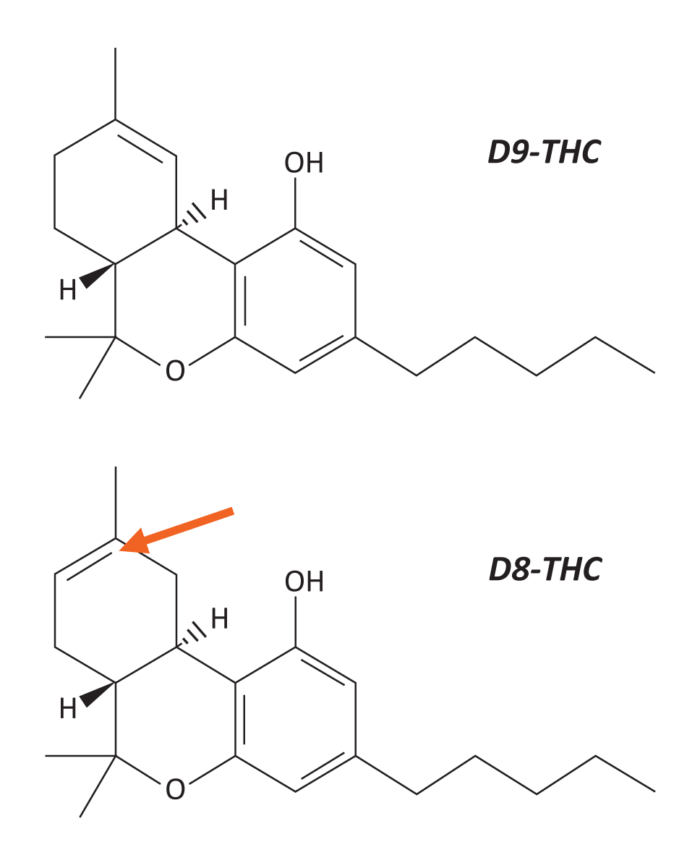By Dylan Wilks, CTO
During our research, testing and validation of Δ8THC (Delta-8-Tetrahydrocannabinol) for LightLab 3, we found two interesting results:
- Every Δ8THC sample we analyzed contained significant Δ9THC (typically more than 2%). The only exception to this was certified reference materials, which contained no Δ9THC.
- If the same sample is sent to multiple laboratories, the amount of Δ9THC and Δ8THC reported varied significantly. For example, one sample sent to 9 laboratories varied from 0% to over 7.5% Δ9THC.

These two results are related to the process in which Δ8THC is typically made. Generally, Δ8THC is synthesized from CBD by using heat and a catalyst. The process is not perfectly specific, meaning it can make many different cannabinoids alongside Δ8THC, including Δ9THC. Most of these cannabinoids are not fully understood except for Δ9THC.
Since there are so many unknown cannabinoids present, measuring the amount of Δ8THC and Δ9THC in Δ8THC concentrates can be challenging. To make matters worse, Δ9THC and Δ8THC are themselves similar in molecular structure. That means for both laboratories and LightLabs alike, it is a challenge to accurately quantify the two cannabinoids in a Δ8THC concentrate.
Due to these challenges, when a Δ8THC sample is analyzed by a laboratory or a LightLab, there are two things to be aware of:
- The level of accuracy for both Δ8THC and Δ9THC will be lower than the other reported cannabinoids.
- The sample will likely contain significant levels of Δ9THC. In other words, the samples are likely to be “Hot” or Adult-Use only.
Orange Photonics has developed a specific analysis for Δ8THC that allows LightLab to achieve higher accuracy than a more generalized HPLC measurement approach. With that said, the following limitations of our algorithm should be noted:
- Δ8THC has a detection limit of 12% in concentrate samples, and 4% in flower samples.
- Δ8THC and Δ9THC values can be affected by other cannabinoids that are made in the Δ8THC synthesis process and may have errors in the 2-5% range.
At Orange Photonics, we work hard to convey the varied and complex compounds that are expressed in cannabis and strive to provide valuable information about the chemical makeup of cannabis products. As our collective understanding of cannabis expands, Orange Photonics is investing in providing cutting-edge analyses. We expect to continue to add cannabinoids and other compounds to LightLab’s capabilities as we continue to learn.
Back to Minors Module

